One of the main components in our desktop PCs or laptops is the hard disk. Even if you have a hard disk with a large storage space capacity, you often end up with low disk space at some point or the other. This is the most common problem in both traditional mechanical drives and solid-state devices.
Solid state devices which offer very little disk space than mechanical hard drives are prone to this problem. The main cause of this issue is the unimportant junk files and unused programs cluttering your hard disk. If you are hunting for ways to free up your disk space, then these ways will surely help you.
Let’s see one by one.
1. Disk Cleanup
Disk cleanup is a built-in tool in the Windows operating system to delete temporary files and free up disk space. Using this tool is as easy as it looks. To use this disk cleanup tool, follow the below steps:
- Open the file explorer on your PC by clicking the shortcut icon on the desktop or the Start menu. You can also use the Win+E shortcut key combination to open the file explorer.
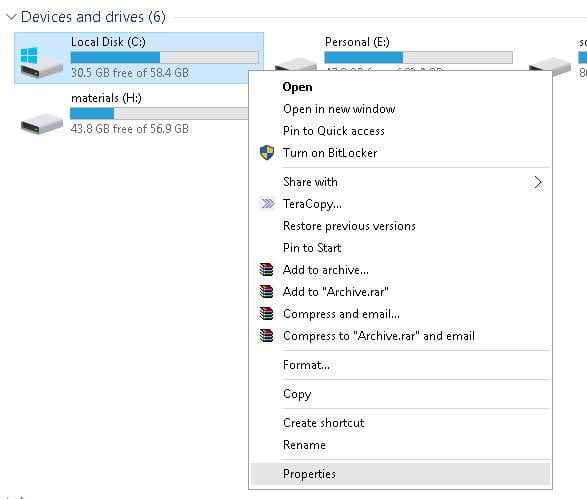
- Right-click on the hard drive that you want to free up and select the Properties option.
- The Hardrive properties window will appear on the screen. Click the General tab and click the Disk Cleanup button.
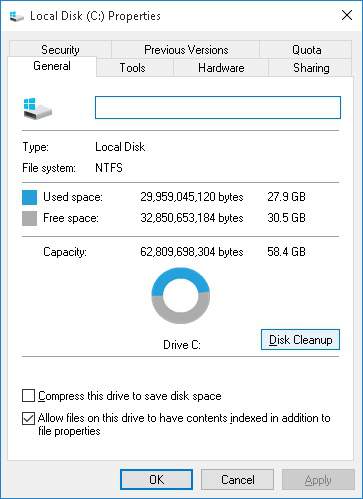
- The disk cleanup window will open on the screen. Select the types of files that you want to delete and click the OK button. This includes temporary files, log files, files in your recycle bin, and other junk files.
- System files don’t appear in the above files. To delete system files, click the Clean up system files button. It will take some time to recalculate the disk space and more options tab will appear next to disk cleanup.
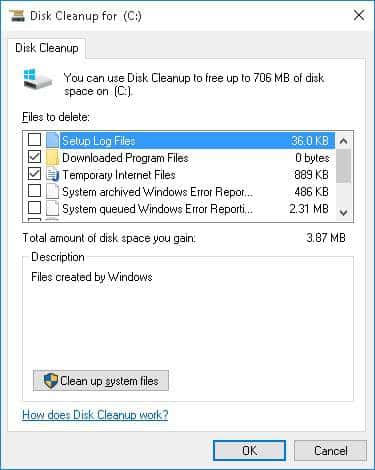
- Select the More options tab and click the Clean up button to delete the system restore points and the shadowed copies.
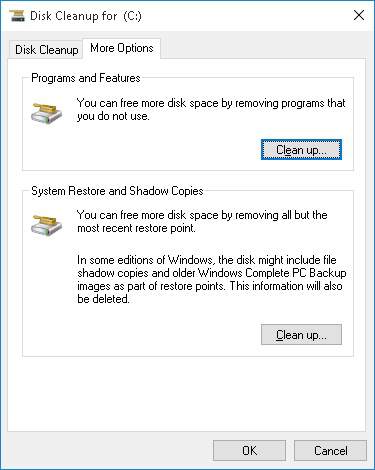
Alternatively, you can launch the Disk Cleanup tool by searching for it in the Start menu.
2. Uninstall Unused Programs
Most of the time we install programs or applications which we use rarely. Uninstalling such applications will free up some amount of disk space. If you want to know how much space each program or application is using, then search for Uninstall programs in the Start menu. You can see the size column next to the program indicating the amount of space it is occupying, If you don’t find the size column, select the detail view option on the top right side of the window.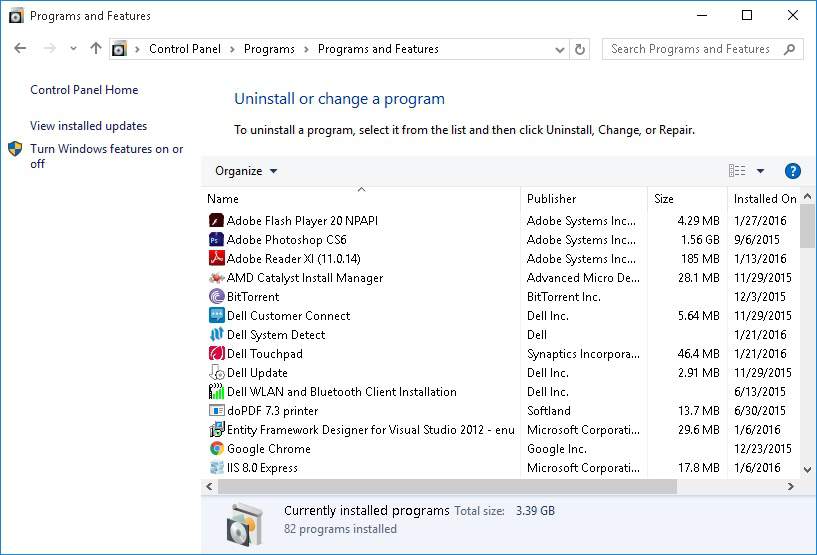
3. Analyze Disk Space
Analyzing the disk space will help you figure out how much space is occupied by each file, folder, and program in detail. Try WinDirStat tool to analyze the disk space. This tool will help you to know how much each program is occupying even for the programs which the Uninstall programs size column doesn’t show. As a notice of precaution ensure that you don’t delete the important system files else you may end up with some other problem.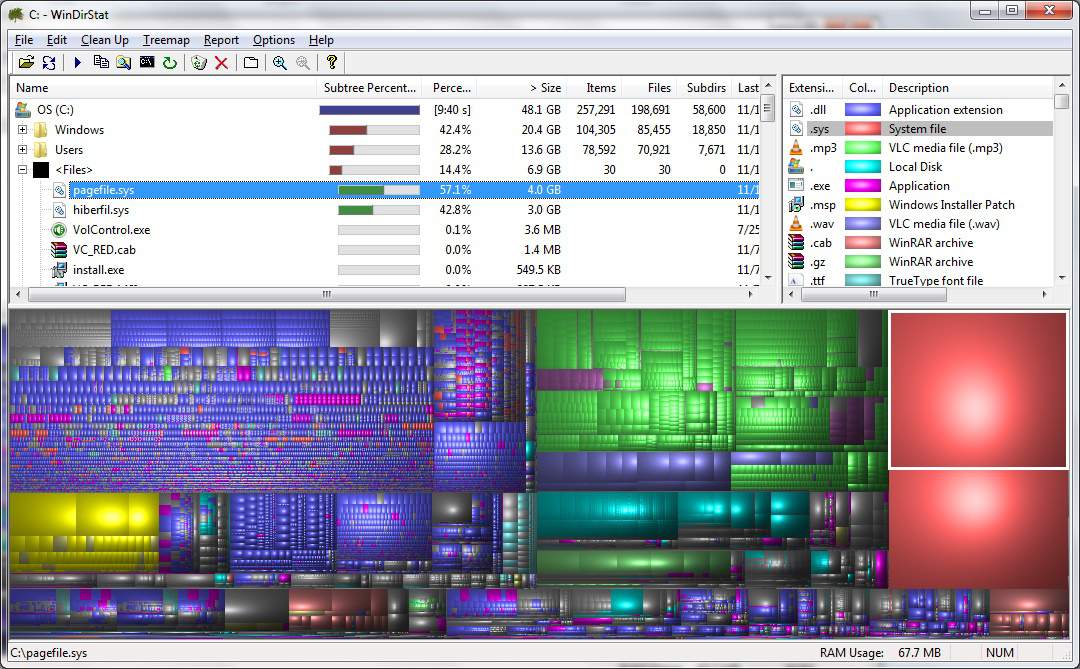
4. Clean Temporary Files
The main disadvantage of the Disk Cleanup tool mentioned above is that it doesn’t clean up the temporary files used by other programs. For example, browsers like Chrome, and Firefox use disk space to store cache data. This cache data may sometimes occupy disk space in gigabytes. Use third-party tools like CCleaner to delete the temporary and junk files of the other programs.
5. Remove Duplicate Files
Most of us store images on the hard disk and sometimes we may end up creating duplicate images. These images occupy the same space as that of the original image. Not only images but also other types of files also have duplicates on the hard disk. So using a tool like Dupeguru will help you to identify those duplicate files and delete them.
6. Reduce System Restore Space
Well, do you know that some part of the hard disk space will be dedicated to the system restore to keep the restore points? If you think the disk space is an important criterion for you, reduce the amount of space allocated to system restore. However, doing so will create only a few restore points for your PC.
7. Nuclear Options (Not Recommended)
This option is not recommended as it may disable some of the Windows features. If you are desperately in need of more space then try the below ones.
- Disable Hibernation: When you hibernate your system, the contents in the RAM are stored on the hard disk to save the amount of power usage. Once you turn on your PC these hibernate system files will be taken back into RAM. So disabling the hibernation will help to gain some amount of disk space.
- Disable System Restore: To free up some disk space disable the system restore feature in your Windows operating system. But you won’t be able to perform a system restore if your PC gets corrupted.
That’s it. Isn’t it helpful?
If you like it, share it with your friends. Do let us know your valuable suggestions in the below comment section.
